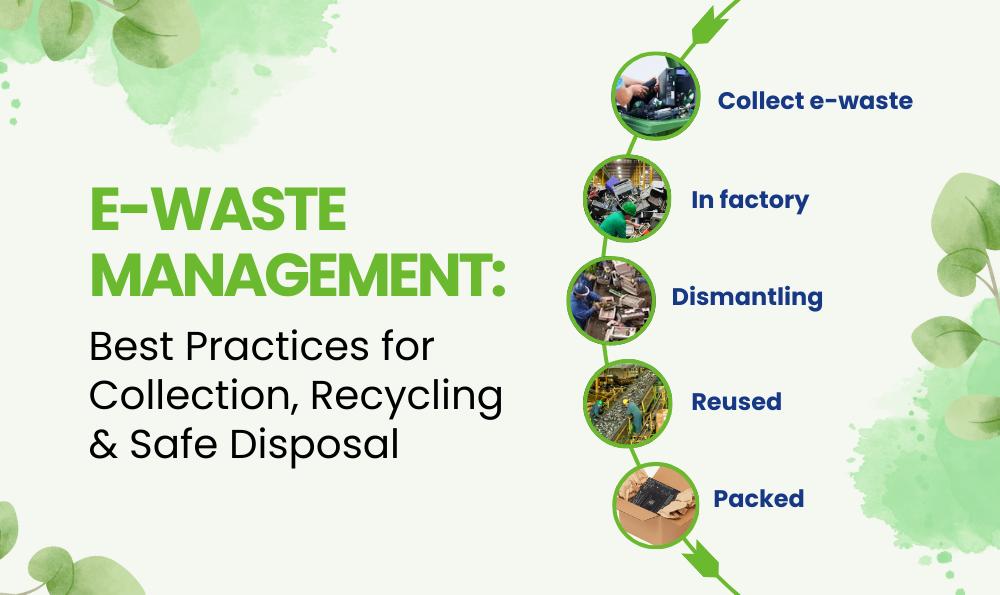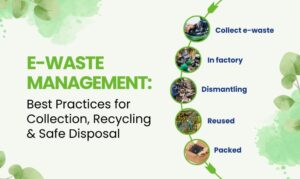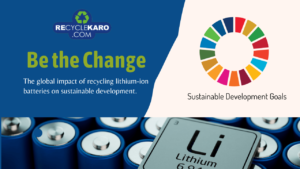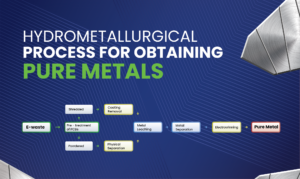Complete Guide to EPR Registration in India: Meaning, Online Process & Certificate Requirements

India’s approach to waste management has seen a massive shift in the last decade, and Extended Producer Responsibility (EPR) is leading the way. Especially when it comes to e-waste, EPR isn’t just a compliance requirement—it’s a serious commitment to sustainability.
If you’re a manufacturer, importer, or brand owner dealing with electrical or electronic equipment, understanding EPR registration is non-negotiable. In this guide, we’ll walk you through everything you need to know about EPR registration in India, including the online process, certificate requirements, and more.
What Does EPR Registration Mean?
EPR registration (Extended Producer Responsibility registration) is the government’s way of making sure businesses that produce or sell electronics are also responsible for handling the waste those products generate.
In short: You make it, you manage its waste.
EPR registration = Government approval to sell electronics + Commitment to manage their waste.
Under India’s E-Waste (Management) Rules, 2022, anyone manufacturing, selling, or importing electronic products must get an EPR registration certificate from the Central Pollution Control Board (CPCB).d coordinated governmental and industrial initiatives, including the support of reputable e waste recycling companies in India.
Who Needs EPR Registration?
You must apply if you are any of the following:
- Manufacturer of Electrical and Electronic Equipment (EEE):
- If you make electronics in India, you must register for EPR.
- This includes companies manufacturing laptops, phones, washing machines, TVs, etc.
- Importer of Electrical and Electronic Equipment:
- If you import electronics (for resale, distribution, or even for internal use), you must have EPR registration before the goods land in India.
- This is crucial for customs clearance too — no EPR certificate = no clearance at the port.
- Brand Owner:
- If you sell electronics under your brand name (even if a third party manufactures them), you are responsible for EPR compliance.
- Example: If you sell smartphones under the brand “ABC Phones” but a factory manufactures them for you, you are still responsible for EPR.
- Refurbisher or Assembler:
- If you refurbish (repair and repackage) or assemble (put together parts into a finished electronic product) electronics, you must register.
- Even if you don’t make new electronics but fix/assemble them, you are generating e-waste risk, so you need EPR compliance.
Especially important about Imports:
If you’re bringing ANY electronic goods into India (even in small quantities), EPR registration is mandatory.
Customs will now often ask for your EPR Certificate before releasing goods.
Without EPR registration, your shipment can be stuck at the port, and you may face penalties.
How to Apply for EPR Registration Online
1. Create an Account on the CPCB’s EPR Portal
- Go to the official CPCB EPR Portal (make sure it’s the official site).
- Click “Sign Up” and create your user ID and password.
- You’ll need to verify your email and mobile number through OTP.
Tip: Use an official company email (like info@yourcompany.com) — it looks more professional.
2. Fill Out the EPR Registration Form
- Once logged in, select the right category:
👉 Manufacturer / Importer / Brand Owner / Refurbisher. - Fill in your business details carefully:
- Company name
- Address
- Contact person
- Type of products (laptops, mobiles, appliances, etc.)
- Mention how much quantity (units or weight) you plan to sell or import.
Tip: Double-check all entries. Small mistakes = delays!
3. Upload Required Documents
You will need to upload clear copies of the following:
- PAN Card of the company
- GST Certificate
- Import-Export Code (IEC) certificate (mandatory if you import)
- CIN (Company Incorporation Certificate)
- Authorized Signatory ID Proof (like Aadhaar or Passport)
- Product Details (brochures/spec sheets with product codes)
- E-Waste Management Plan (basic plan on how you will collect and recycle waste)
Tip: Scan documents properly — no blurry images!
Keep file size below 5MB per file if possible.
4. Pay the EPR Registration Fees
- Fees depend on your company’s annual turnover:
Small turnover = Lower fees
Large turnover = Higher fees - Payment can be done online through net banking or UPI.
Tip: Keep a screenshot or receipt of your payment, just in case you need it later.
5. Track Your Application Status
- After submitting everything, you can track your application online by logging back into the portal.
- The status updates are:
- “Under Review”
- “Queries Raised” (if CPCB needs clarification)
- “Approved” or “Rejected”
Tip: If they ask for any correction or additional document, respond quickly to avoid delays.
6. Download Your EPR Certificate
- Once approved, you’ll get your EPR Certificate in your account dashboard.
- Download and save multiple copies — you’ll need it for customs, compliance checks, and to share with recyclers.
Congratulations, you’re officially EPR registered!
Important Advice:
- Be thorough: CPCB can reject applications if documents are missing or wrong.
- Stay updated: EPR certificates are valid for a limited time — usually 5 years. You must renew before it expires.
Assign someone to monitor your e-waste collection and reporting. You’ll need to file regular compliance reports!
EPR Registration Fees in India
Your EPR registration fees depend on your annual turnover:
| Turnover Range | Fees |
| Up to ₹5 Crores | ₹10,000 |
| ₹5-50 Crores | ₹20,000 |
| ₹50-100 Crores | ₹40,000 |
| Above ₹100 Crores | ₹50,000 |
Tip: For EPR registration for import, some additional scrutiny charges might apply based on your import volume.
Key Obligations of Producers, Importers, and Brand Owners
Getting your EPR certificate is a big first step, but remember — it comes with ongoing duties that you must follow every year. These responsibilities aren’t just formalities; they are crucial to ensure you stay compliant under Indian e-waste laws.
Here’s what you need to know and do:
Fulfill Collection Targets:
Under EPR, you must collect a specific percentage of e-waste equivalent to the products you sold in the previous years. These targets are set by regulatory authorities and tend to increase gradually over time. You can fulfill these targets by setting up collection centers, organizing take-back programs, running collection drives, or collaborating with authorized recyclers. It’s important to start planning early and keep track of your collections to ensure you meet the required targets without any last-minute rush.
Submit Annual Returns:
Filing your EPR compliance reports on time is a critical part of your responsibility. You are required to submit an Annual Return every year, showing details of the amount of e-waste generated, collected, and properly recycled. These reports must be accurate, complete, and submitted within the specified deadlines set by the Central Pollution Control Board (CPCB). Delayed or incorrect filings can attract heavy penalties and may even risk your EPR authorization status.
Engage Authorized Recyclers:
You must ensure that all your e-waste collection and recycling activities are carried out only through recyclers who are authorized by the CPCB. Working with unauthorized recyclers is illegal and could result in environmental harm and legal action. Always verify the authorization status of your recycler and maintain proper agreements and documentation. This not only keeps you compliant but also ensures that the recycling process is safe and environmentally responsible.
Maintain Records:
Keeping proper records of all e-waste related activities is mandatory under EPR regulations. You should maintain detailed documentation of the quantity of e-waste collected, transported, stored, and handed over to recyclers. These records must be preserved carefully and made available for inspection by authorities when required. Good recordkeeping practices make it easier to prepare your annual returns and demonstrate compliance during audits.
Consumer Awareness:
You are required to run campaigns that educate your customers about responsible disposal and recycling of electronic waste. This could involve posting information on your website, running social media campaigns, placing awareness posters at retail points, or even organizing workshops. Educating consumers not only helps improve e-waste collection rates but also enhances your brand image as a responsible and eco-friendly organization
Skipping these? Risk heavy penalties or even losing your EPR authorization.
Documents Needed for EPR Registration
Here’s your document checklist:
- PAN Card
- GST Certificate
- Import-Export Code (for importers)
- Product Brochures/Technical Specs
- Waste Management Plan
- Authorization Letter
- Board Resolution for Authorized Signatory
- Previous EPR Certificate (if applicable)
Make sure all documents are updated and accurate.
The Role of Technology in EPR Compliance
Technology has become a game-changer in making EPR compliance easier:
- Digital Tracking Platforms:
Producers can now use digital tracking platforms to monitor the entire lifecycle of their products—from manufacturing and sales to collection and recycling. These platforms make it easier to manage data, track movement, and generate real-time reports on e-waste collections. With everything available at your fingertips, it becomes simpler to meet compliance requirements and quickly address any gaps in your process.
- Blockchain:
Blockchain technology adds a powerful layer of transparency and security to the collection and recycling process. By recording every transaction in a decentralized ledger, it ensures that the data cannot be tampered with or altered. This builds trust with regulators, consumers, and other stakeholders by showing a clear, verified trail of how e-waste is handled from start to finish.
- Mobile Apps:
Mobile apps make it much easier for consumers to participate in e-waste recycling efforts. Through these apps, customers can locate the nearest authorized drop-off points, schedule pickups, and even learn more about recycling practices. This convenience encourages more people to recycle, helping brands meet their collection targets while improving consumer engagement and loyalty.
- Automated Reporting Tools:
Automated reporting tools help simplify the complex task of filing annual returns and tracking compliance targets. These tools can collect, organize, and analyze large amounts of data, ensuring that reports are accurate and submitted on time. They reduce human error, save time, and make it easier for companies to stay on top of their regulatory obligations without scrambling at the last minute.
Leveraging smart tech not only improves efficiency but also boosts your brand’s credibility.
Achieving Sustainability Goals through EPR Compliance
Getting your EPR registration certificate is not just about avoiding penalties—it’s a big leap toward sustainability.
Through proper EPR compliance:
Businesses contribute to a circular economy:
By taking responsibility for the entire lifecycle of their products, businesses help create a circular economy where materials are reused, recycled, and kept in use for as long as possible. Instead of products ending up in landfills after a single use, they are brought back into the production cycle. This reduces the need for raw materials and minimizes waste, making business practices more sustainable over the long term.
Landfills are spared from toxic waste:
Electronic waste often contains harmful substances like lead, mercury, and cadmium. When e-waste is improperly discarded into landfills, these toxins can seep into the soil and water, causing serious environmental damage. Through EPR compliance, businesses ensure that their products are collected and processed safely, keeping toxic materials out of landfills and protecting ecosystems and communities.
Natural resources are conserved by promoting recycling:
Many electronic devices are made using valuable natural resources like rare earth metals, copper, and gold. Recycling old products allows these materials to be recovered and reused, significantly reducing the demand for fresh mining and extraction. This not only conserves precious resources but also reduces the carbon footprint associated with producing new raw materials.
Brands enhance their reputation among environmentally conscious consumers:
Today’s consumers are paying close attention to the environmental practices of the brands they support. Businesses that take proactive steps through EPR show that they care about more than just profits—they care about the planet. Proper EPR compliance boosts brand image, builds consumer trust, and sets companies apart in an increasingly eco-aware market.
In today’s market, customers care about your environmental footprint. With EPR, you show that you do too.
Common Mistakes to Avoid During EPR Registration
Some easy mistakes can delay your approval:
- Incomplete documentation
- Incorrect product categorization
- Lack of a detailed waste management plan
- Missing out on renewals
- Not keeping track of compliance obligations
Pro Tip: Hire a professional EPR consultant if you’re unsure.
Final Thoughts
Navigating the EPR registration process is crucial for every producer, importer, and brand owner dealing in electronics. It’s not just a legal formality—it’s a big step toward building a greener, more responsible India.
By completing your EPR registration online and managing your e-waste properly, you’re ensuring compliance, protecting the planet, and setting your brand apart in a competitive market.
If you haven’t applied yet, now is the perfect time to get your EPR registration certificate and make a difference.
FAQs
1. Is EPR registration mandatory for importing electronics into India?
A: Yes, EPR (Extended Producer Responsibility) registration is mandatory if you are importing electronics into India. Without a valid EPR certificate issued by the Central Pollution Control Board (CPCB), you cannot legally sell, distribute, or place electronic products on the Indian market. Import shipments can even be held up at customs if you fail to show proof of EPR compliance.
2. How long does the EPR registration process take?
A: On average, the EPR registration process takes about 4 to 8 weeks, depending on the accuracy of your application and how quickly you respond to any queries from the CPCB. Incomplete documents or errors can delay the approval. It’s important to prepare all necessary documents like company registration certificates, product details, and recycling plans carefully before applying to speed up the process.
3. What happens if I don’t comply with EPR regulations?
A: Non-compliance with EPR regulations can result in serious consequences. Authorities can impose heavy financial penalties, suspend your license to operate, confiscate your products, or even initiate criminal proceedings in severe cases. Moreover, non-compliance can damage your brand reputation, making it harder to do business with environmentally conscious customers and partners.
4. Can I manage EPR obligations myself or do I need professional help?
A: Technically, you can manage your EPR obligations yourself if you have a good understanding of the rules and access to authorized recyclers. However, many businesses prefer to work with EPR consultants or Producer Responsibility Organizations (PROs) who specialize in handling compliance tasks like documentation, reporting, recycling partnerships, and awareness campaigns. Professional help reduces the risk of errors and ensures that you meet all deadlines without stress.
5. How often do I need to submit EPR compliance reports?
A: EPR compliance reports, also known as Annual EPR Returns, must be submitted once every financial year. The report should include data on the quantity of products sold, e-waste collected, recycled, and details of the authorized recyclers you worked with. Timely and accurate submission of this report is crucial to maintaining your EPR authorization and avoiding penalties.



